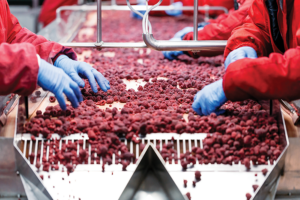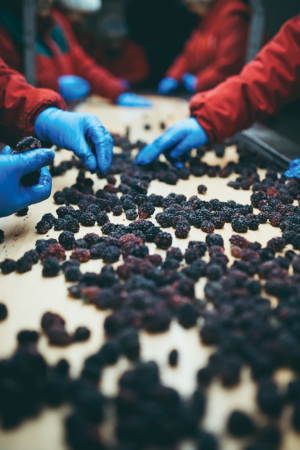Safety starts with sanitation, requires clear communication
The best plan for proper cleaning and sanitation to ensure food safety can break down completely if the employees don’t get the message.
“Since FSMA (the Food Safety Modernization Act), a lot of the required training has been directed towards owners and facility managers,” said Chip Simmons, agriculture specialist in fresh produce, food safety at North Carolina State University. “Sometimes, the boots- on-the-ground employees doing the work may not get the same level of training or a consistent message.”
Having Standard Operating Procedures (SOPs) can help.
One principle of hygienic design is for employees responsible for cleaning and sanitizing to be able to see and reach all surfaces. This does not mean the surfaces must always be accessible. Equipment may have to be disassembled and observation ports opened. SOPs can help ensure that nothing is missed.

Collection points for contaminants such as niches or improper joints in equipment are always possible. Employees responsible for cleaning and sanitizing must be aware of that potential and know how to mitigate it. Again, SOPs can help.
“The growers and managers know their operations well,” Simmons said. Employees may not, and packing facilities often aren’t simple systems.
SAFETY ZONES
Evaluating a facility by zone based on the level of contamination risk can help.
- Zone 1 surfaces touch or are exposed to produce during normal operations. Examples include conveyor belts, rollers, workers’ hands and reusable containers.
- Zone 2 surfaces are not in direct contact with produce but close to Zone 1 surfaces and could be sources of contamination. Examples include tools, walkways and outer parts of machines.
- Zone 3 surfaces are adjacent to Zone 2 surfaces and include walls, floors, drains and other areas that could cause cross contamination if not properly cleaned.
- Zone 4 surfaces are beyond the packing area and include areas such as hallways, offices and break rooms.
“The most important surfaces are Zone 1 and the Zone 2 surfaces that could directly affect Zone 1,” Simmons said. “One advantage to looking at your facility in zones is to plan how you might clean and sanitize and plan the frequency of cleaning and sanitizing.”
Zone 1 surfaces should be cleaned and sanitized at least daily. Surfaces with less contamination risk can be cleaned on a weekly schedule.
“Focus on Zone 1,” Simmons said. “Then look at Zone 2 and any surfaces that could directly impact Zone 1. A spray bar is not Zone 1, but the spray could splash back up and the spray bar become contaminated.”
HAZARD VERSUS RISK
Differentiating between hazard and risk is a key part of the process. A hazard is anything that could potentially go wrong or cause harm. Risk is how likely the hazard is to affect food safety.
“Standing water in a packing facility is a hazard for listeria,” Simmons said. “The risk is people walking through it or forklifts driving through it.”
It can also help to differentiate possible hazards from known or probable hazards.

E. coli being carried in from the production field is a possible hazard. It makes cleaning and sanitizing important. A sick employee is a known or probable hazard. This may require a stronger response such as cleaning and disinfecting.
Preventing contamination often includes siting and layout. “How is the equipment arranged? Is it arranged so it can be cleaned and sanitized? A site that is difficult to get to, and difficult to clean and sanitize, could harbor a bacteria that could create a biofilm,” Simmons said.
Solid rollers, for example, are preferred over hollow rollers. “How often would a hollow roller be taken apart and cleaned? Probably not very often,” Simmons said.
Are the observation ports only accessible by using a wrench or are they secured with wing nuts? “Anything can be taken apart, but it takes time,” Simmons said. “Growers and packers spend a lot of money on cleaning crews to come in, and anything that makes cleaning easier saves time and money.”
GOING WITH THE FLOW
The produce flow is always something to think about. Ideally, flow should be in one direction to avoid backtracking and potential cross contamination. Once produce is washed, keep it moving toward the cooler or market.
The flow of people is also important. How often do workers move through the wash and pack area? Are there enough doors to allow efficient movement and minimize cross contamination?
“It’s not just the people,” Simmons said. “It’s the flow of equipment.”
That includes storage bins, forklifts, carts — anything that could move from one area to another.
Some buyers have food safety standards that are higher than the federal standards and insist packers have an environmental monitoring program. This could be swabbing areas on a routine basis, looking for microbial indicators or looking for actual pathogens.
“Regulations are in place to protect the public,” Simmons said. “Third-party protocols are here to protect the business. You have to protect the public and you have to make sure people can stay in business.”










